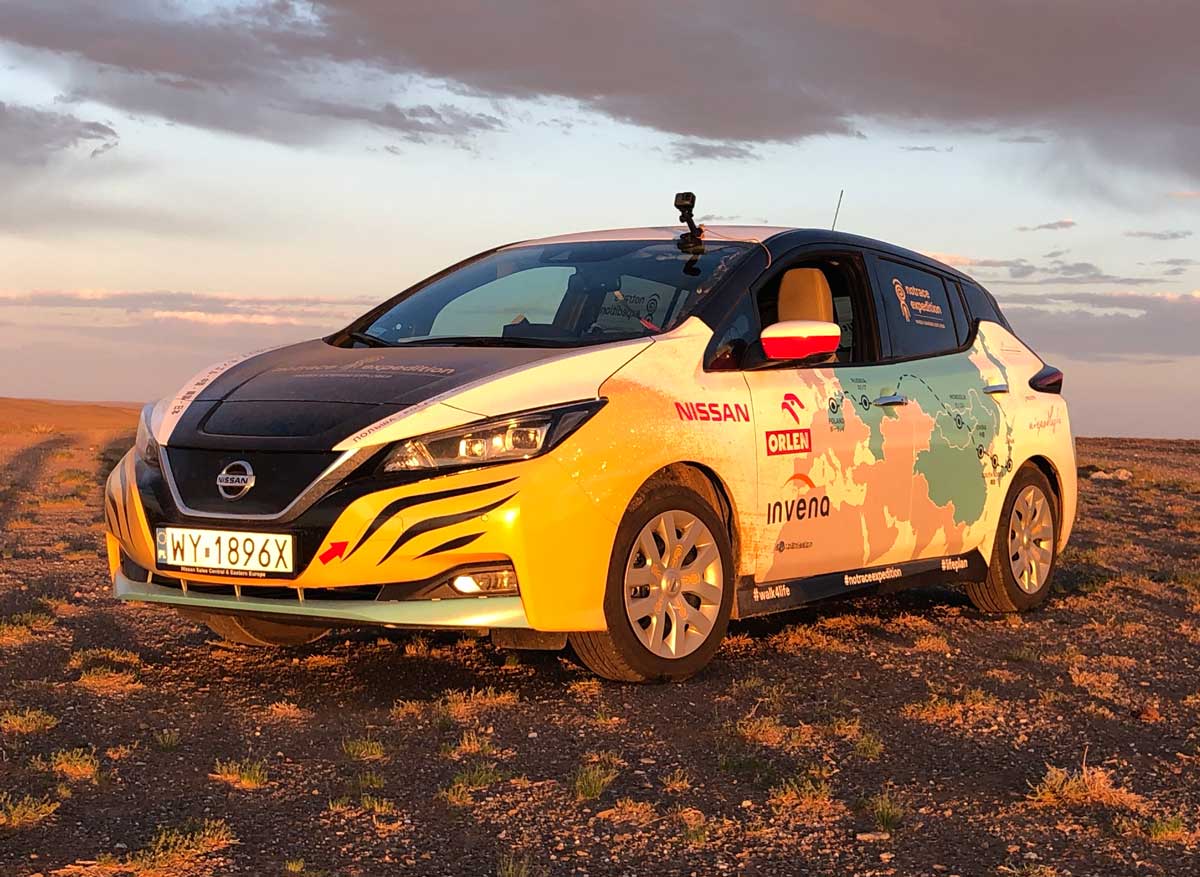
An all-electric Nissan LEAF has travelled 13,000km across the European and Asian continent to raise awareness about the long distance capabilities of electric vehicles.
Setting out from Poland over two months ago, the Polish adventurer and explorer Marek Kamiński arrived in Beijing on July 16, 2018 at the Dongfeng Nissan’s Intelligent Mobility Experience Center.
His inspiration for the No Trace Expedition came during a journey to both ends of the earth, where he took in the untouched, pristine environments of the earth’s poles.
“When standing on Earth’s two poles, I saw a clean, flawless white world with no pollution,” says Kamiński. “There probably are very few adventurers who would drive an electric car for tens of thousands of kilometers on an uninterrupted expedition.”
Range is a barrier to purchase electric vehicles for many people, and Kamiński’s main purpose in the journey was to dispel myths that there is not enough infrastructure to complete long journeys.
The Nissan LEAF, which is the world’s most popular 100% electric car to date, was the perfect choice for Kamiński, who says that its cumulative mileage history is proof of its reliability.

During the adventure, Kamiński used Nissan’s ProPILOT, a component of Nissan Intelligent Mobility that provides additional convenience to drivers.
“The Nissan ProPILOT is energy-saving for long-distance driving,” Kamiński explained.
“I’ve been using ProPILOT on new Nissan LEAF, and it worked perfectly under all kinds of driving conditions during the expedition,” says Kamiński.
In Europe, the Nissan LEAF is the best-selling car with company reaching a major milestone with the delivery of the 100,000th LEAF to Spain early last month.
Worldwide, EV drivers have bought over 340,000 Nissan LEAFs.
Talking about new energy vehicle uptake in Europe, Kamiński commented that in some countries in Europe such as Lithuania and Poland, charging of electric vehicles can be done for free.
In China, now on the way to becoming the world’s largest adopter of electric vehicles technology, charging infrastructure is commonly available with 214,00 public charging stations installed by the end of last year.
Kamiński’s says that widespread uptake of EVs is likely to follow the path of other technologies that were once uncommon but are now part of everyday life.
“Comparing new energy vehicles to traditional vehicles is like comparing today’s smart phones to mobile phones 20 years ago,” Kamiński says.
“I believe that it represents infinite possibilities of the future. Maybe next year, I will drive across the extremely cold land of Siberia with Nissan LEAF.”










